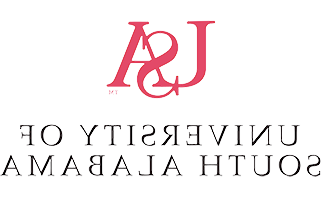
|
政策编号:2020
负责办公室:安全 & 环保合规
最后审查日期:2022年10月2日
下一次需要审查:2027年10月2日
|
实验室、商店和危险区域的未成年人
1. 目的
本政策适用于任何大学实验室的未成年人, 使用危险化学品的商店和/或区域, 具有生物危害性或传染性的材料, 放射性物质, 或者存在物理危险的地方.
2. 适用性
This policy applies to science camps and other department-sponsored events in which minors are approved to participate as part of a larger group, as well as all minors under the age of 19 involved in summer internships, volunteering in research activities and participating in scheduled activities in laboratories, 商店, 危险环境.
3. 定义
生物制剂: Living organisms or products of living organisms such as viruses, 细菌, 真菌, 朊病毒, 和寄生虫.
生物安全水平(BSL)控制: Biosafety Levels 1-4 as defined by the Centers for Disease Control and Prevention BMBL standards. 容器由设施类型定义, 适当的工程控制, 安全工作守则, 以及个人防护装备的使用.
受控物质: Narcotic and non-narcotic substances that are regulated under the Federal Controlled Substances Act and the Alabama Uniform Controlled Substances Act.
危险区域: Locations where there are physical hazards including (but not limited to) compressed gases, 高压电气系统, 极端温度, 过度的噪音, 或坠落危险.
实验室: 在本政策中使用, laboratory refers to any area of a building used or designated to be used by faculty, 从事学术或研究活动的教职员工和学生, which may be hazardous; this includes clinical facilities.
个人防护装备: Personal protective equipment is equipment worn to minimize and when possible eliminate potential exposures from a variety of hazards. 个人防护装备的基本例子是手套等物品, 实验室外套, 听力保护装置, 呼吸机, 安全眼镜或护目镜, 等.
商店: 车间:使用机械和工具的地方或区域. 商店包括但不限于艺术工作室, 工程研讨会, maintenance areas and other sites determined by the Safety and 环保合规 office that meet the definition.
动物园: 饲养活的动物或植物的设施.
4. 政策指导方针
This policy is intended to serve as a minimum requirement; each college and/or department may develop more restrictive policies and procedures as deemed necessary. Exceptions to this policy may be granted on a case-by-case basis according to University guidelines, pending review and written approval by the Vice President for Research and Economic Development Services and Planning.
4.1 实验室的孩子, shop and or hazardous work area personnel are not permitted in these areas except under one of the following conditions:
-
- In accordance with requirements established in the Children of Employees and Students in Campus Facilities policy;
- In laboratory, shop and/or hazardous areas which have been cleared of all associated hazards;
- In a venue of a University/college/department-sponsored event; or
- For the purpose of escorting a minor to and from an approved non-hazardous office, 设施内的走廊或空间.
4.2 未成年人 从来没有 permitted in any setting where research involves controlled substances, BSL-3或BSL-4隔离区, 放射性物质, 或激光.
4.3 未成年人不得从事以下工作:
-
- 高度危险物质, 包括焦性材料, 炸药, 大量易燃物品(如.g. 1 liter or more), and compounds having oral LD50 less than or equal to 50 mg/kg (e.g.氢氟酸、丙烯腈、四氧化二锇等.);
- International Agency for Research on Cancer (IARC) Group 1 or 2A carcinogens or EPA regulated carcinogen.
4.4 Before minors can access a restricted area as defined by this policy, they must be first trained on the specific hazards to which they may be exposed, including how to recognize such hazards and how to protect themselves from those hazards identified. Minors must be trained on the standard operating procedures and emergency procedures for the hazardous area applicable to their scheduled assignments. All training must be documented and updated as conditions change by Principal Investigators (PI)/Activity Sponsors.
5. 程序
Principal investigators (PI) or activity sponsors must follow these steps to obtain advance authorization and parental permission before allowing a minor to participate in research, 车间和/或危险活动, and must ensure that minors under their supervision receive appropriate training regarding precautions and restrictions.
5.1 Obtain written authorization before the minor begins scheduled assignments in the lab, shop or other potentially hazardous location using the appropriate forms (e.g.,责任免除,豁免).
5.2 Identify and establish direct supervision of the minor prior to allowing entry. The supervisor must be an appropriately qualified University faculty or staff member. Ensure continuous supervision at all times by a trained and knowledgeable supervisor.
5.3 与未成年人一起回顾紧急程序. 向未成年人展示应急设备的位置, 建筑出口和集合点, 如果合适,如何获取安全数据表(e.g. if hazardous materials are being used), and equipment and/or gas emergency shutoffs. Provide emergency contact numbers to include University Police and or security dispatch numbers.
5.4 提供一般和实验室特定的安全培训.
5.5 The PI/Activity Sponsors must confirm and document that the minor receives appropriate laboratory and or shop safety training specific to the area hazards and equipment.
5.6 The PI/Activity Sponsors should provide appropriate PPE and engineering controls, 训练未成年人正确使用.
5.7 The PI/Activity Sponsors must review the basic rules with the minor for working in the laboratory area and/or shop including the designated safety dress code (e.g.(闭头鞋).
5.8 Maintain all training documentation and Liability Release forms in accordance with University policy.
6. 执行
本政策由安全部门强制执行 & 环境合规部. Non-compliance may result in suspension of participation of minors in related programs and areas. Policy violations by faculty and staff may also result in disciplinary action per Faculty Handbook or Staff Employee Handbook, 分别.
7. 相关文档
不适用.
